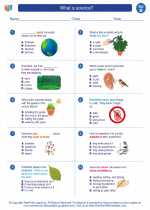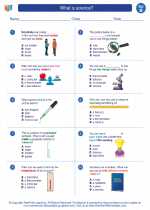Newton's Laws of Motion
Newton's Laws of Motion are three fundamental principles that describe the relationship between the motion of an object and the forces acting on it. These laws were formulated by Sir Isaac Newton in the 17th century and laid the foundation for classical mechanics.
First Law: Law of Inertia
The first law states that an object at rest will stay at rest, and an object in motion will stay in motion with the same speed and in the same direction unless acted upon by an unbalanced force.
Second Law: Law of Acceleration
The second law states that the acceleration of an object is directly proportional to the net force acting on it and inversely proportional to its mass. This can be expressed as the formula: F = ma, where F is the net force applied, m is the mass of the object, and a is the acceleration produced.
Third Law: Law of Action and Reaction
The third law states that for every action, there is an equal and opposite reaction. This means that whenever one object exerts a force on a second object, the second object exerts an equal and opposite force on the first.
Study Guide for Newton's Laws of Motion
- What is the first law of motion and give an example?
- What is the formula for the second law of motion and how is it used?
- Explain the third law of motion with a real-life example.
The first law of motion, also known as the Law of Inertia, states that an object at rest will stay at rest, and an object in motion will stay in motion with the same speed and in the same direction unless acted upon by an unbalanced force. An example of this is when a hockey puck slides across the ice and eventually comes to a stop due to friction and air resistance.
The formula for the second law of motion is F = ma, where F is the net force applied, m is the mass of the object, and a is the acceleration produced. This formula is used to calculate the acceleration of an object when the net force and mass are known.
The third law of motion, the Law of Action and Reaction, states that for every action, there is an equal and opposite reaction. An example of this is when a person jumps off a boat onto a dock. The action is the person exerting a force on the dock, and the reaction is the dock exerting an equal and opposite force on the person, propelling them in the opposite direction.
[Newton's Laws Of Motion] Related Worksheets and Study Guides:
.◂Science Worksheets and Study Guides Second Grade. What is science?

 Worksheet/Answer key
Worksheet/Answer key
 Worksheet/Answer key
Worksheet/Answer key
 Worksheet/Answer key
Worksheet/Answer key
 Vocabulary/Answer key
Vocabulary/Answer key
